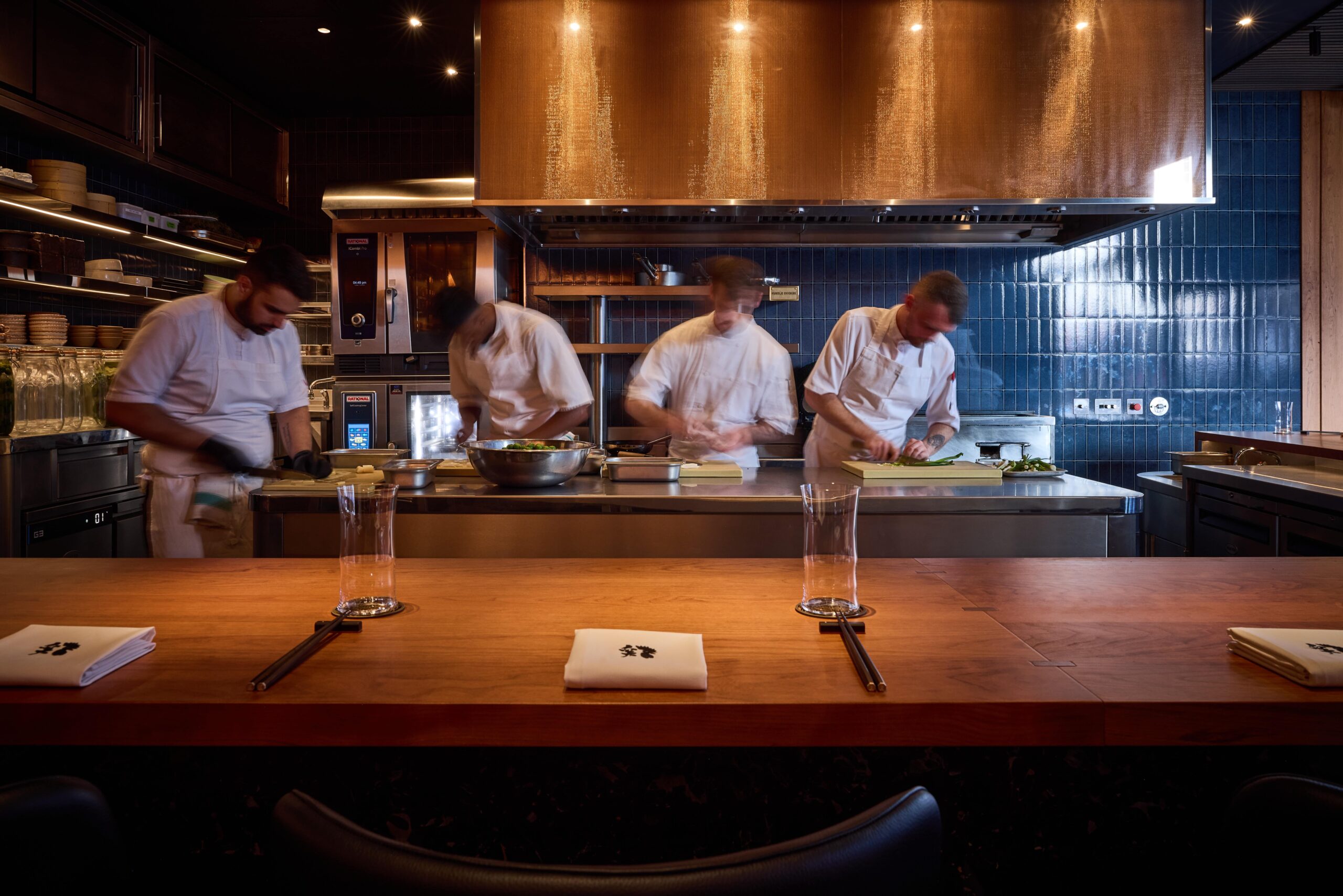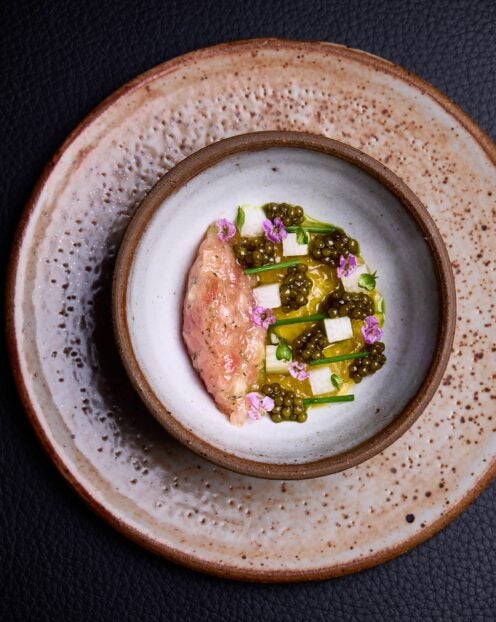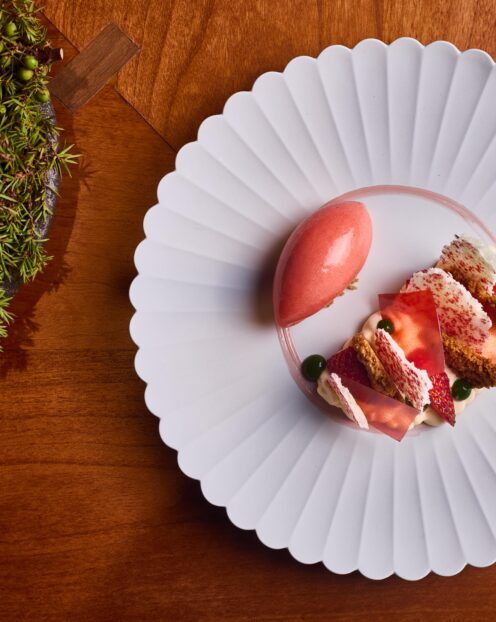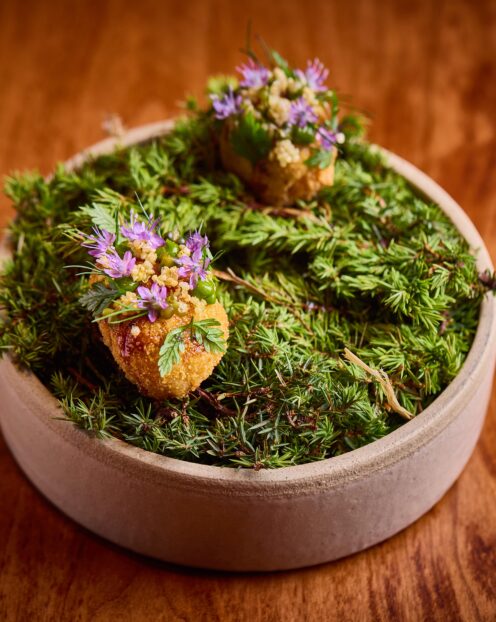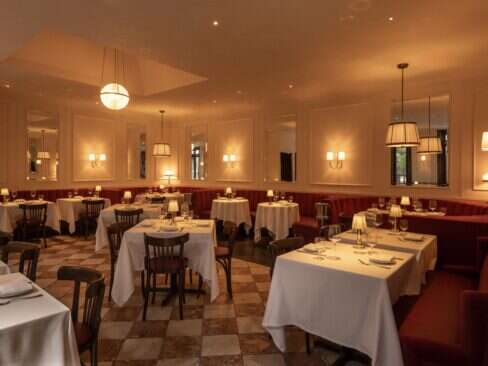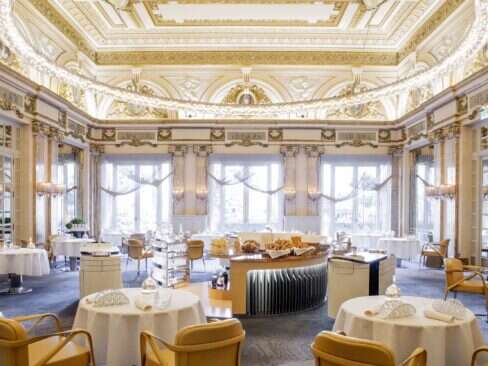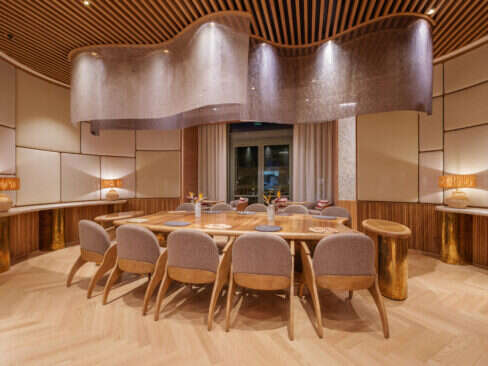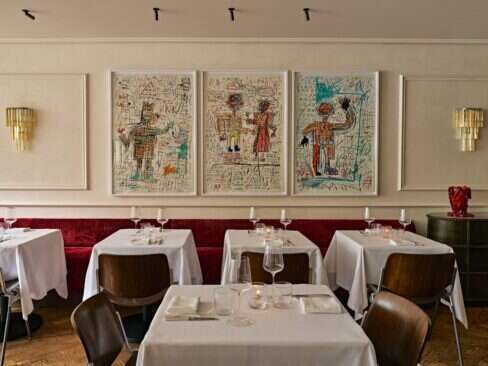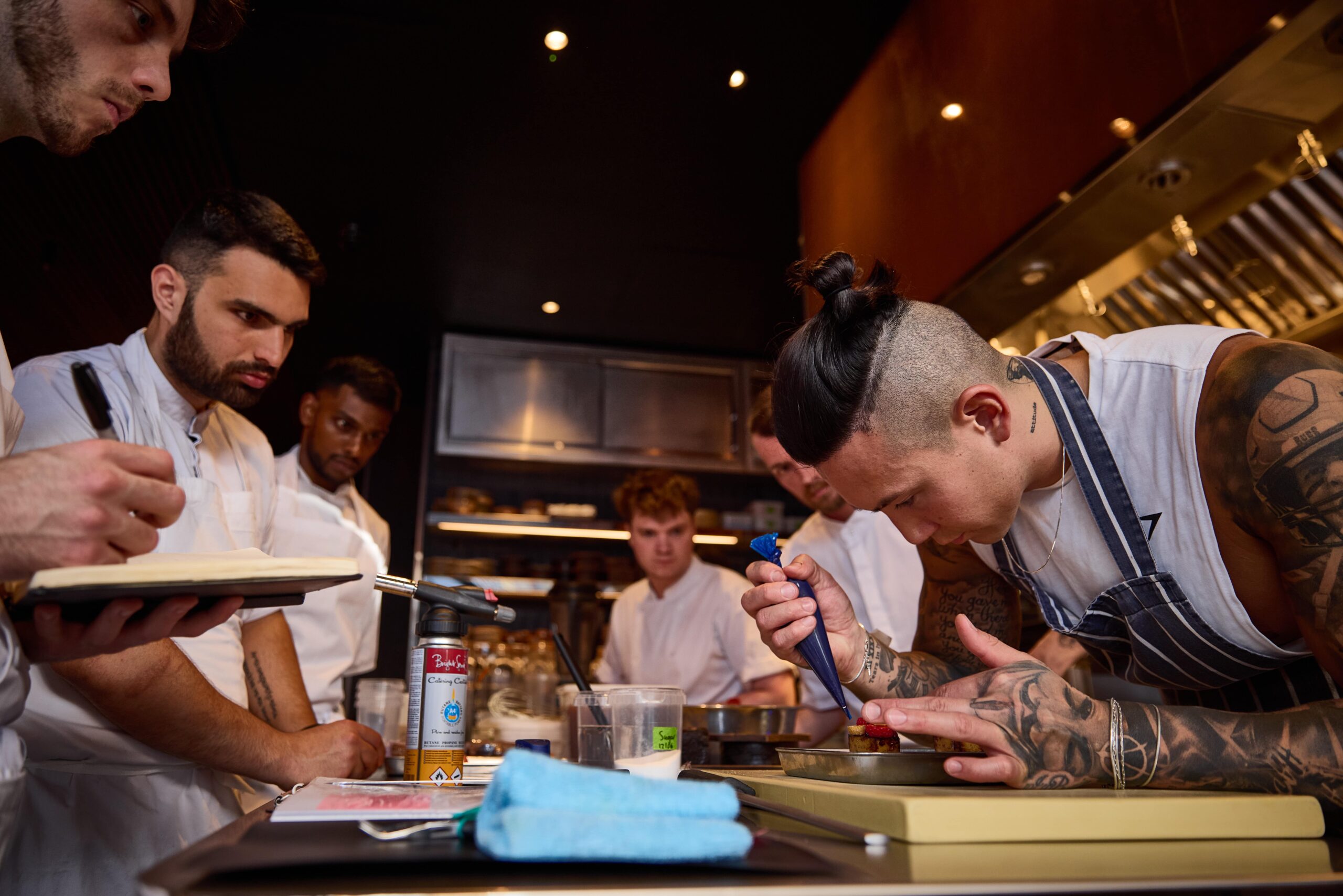
In February 2025, Humble Chicken was awarded its second Michelin star. The following month, it closed, supposedly for a month but the doors remained locked for much longer. Finally, chef Angelo Sato’s restaurant in London’s Soho re-emerged (just) in time for summer, reopening in late June.
“It was against everyone’s advice,” Sato says via video call from the kitchen, as his team carry on their tasks behind him. “When you get two stars, you could open bookings for a year and be fully booked, and you’d have all that money in the bank. Everyone said to milk it for six, seven months and then shut.”
But, that simply wasn’t an option for Sato, and his ambitions are high. “I felt like we were in the position to take the next step,” he says. “We’re really going for that third star and we’re not afraid to shy away from anything. The risk-to-reward ratio is massive.”
As its name suggests, Humble Chicken launched in 2021 as a casual yakitori bar to much acclaim. But despite its popularity, Sato’s ambitions were stretching, and in 2023, the restaurant had a reboot. Gone were the chicken skewers; in was the tasting menu.
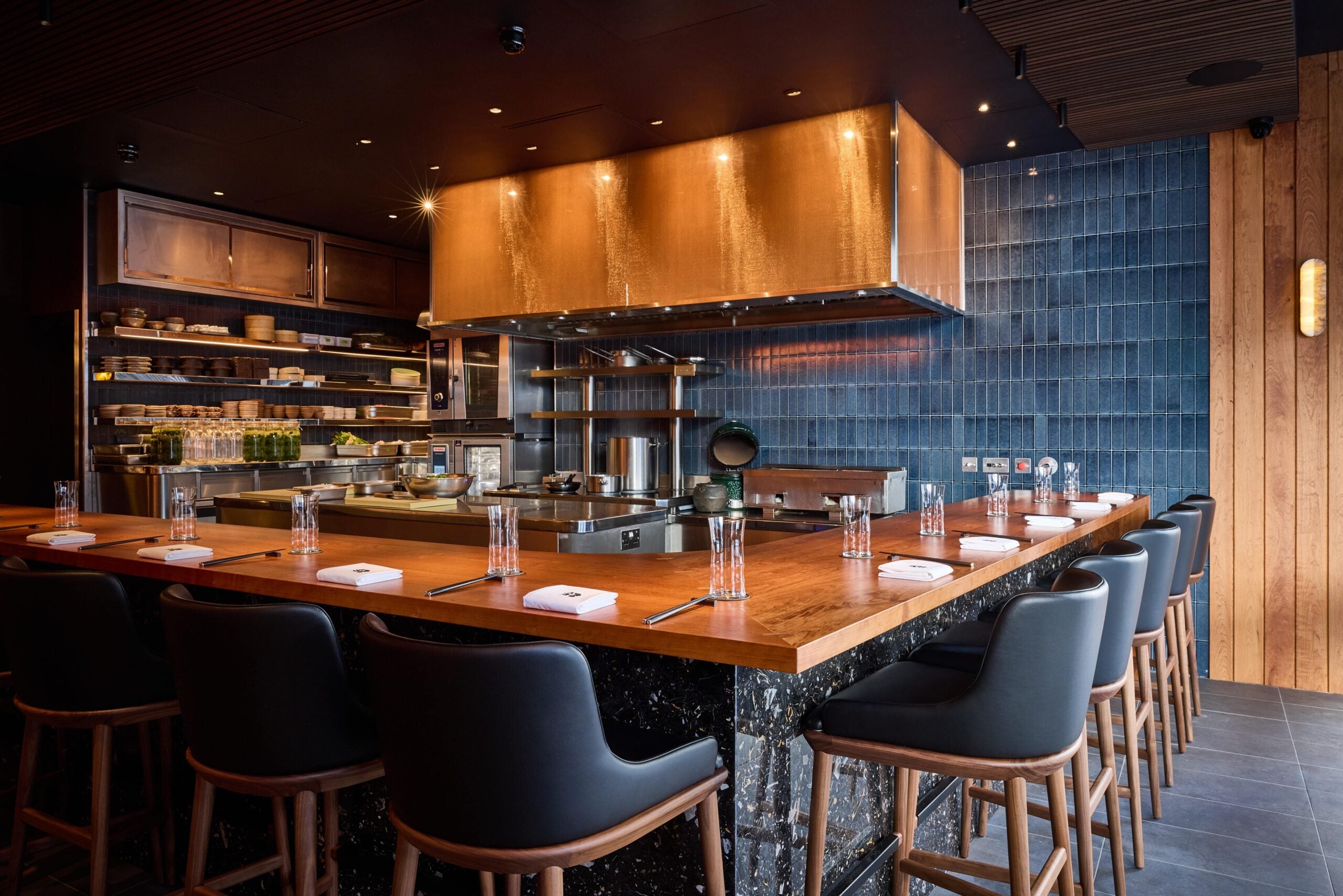
Thankfully, the counter seating remained in situ, with guests watching over the kitchen. Sato and his team toiled over a lengthy menu that stayed true to Humble Chicken’s casual Japanese roots but added refined touches. Regulars loved the upgrade, and the new format brought in a more discerning clientele, too. Angelo Sato was talking and Michelin was listening – he received his first star in 2024.
A year later the second star arrived and the doors slammed shut. So what, then, is Humble Chicken 3.0 all about? “It’s not really a refurb,” he says. “It’s a whole new restaurant.”
While the old version was intimate / cramped, depending on your viewpoint, the space has now been opened up with a larger kitchen, allowing the chefs to move more freely. There are fewer seats, though, a reduction from 18 to 13 per sitting. “It gives us more control and more time with the guests,” Sato says. A fresher color scheme (the deep, heavy red with gray stone has been swopped out in favor of cool dark blue and light wood) and an all-new counter elevates the interior.
The menu has been tweaked dramatically, too, with more than half the dishes scrapped. “We’ve kept our signatures, though, ‘cause I know they’re fucking amazing,” Sato says.
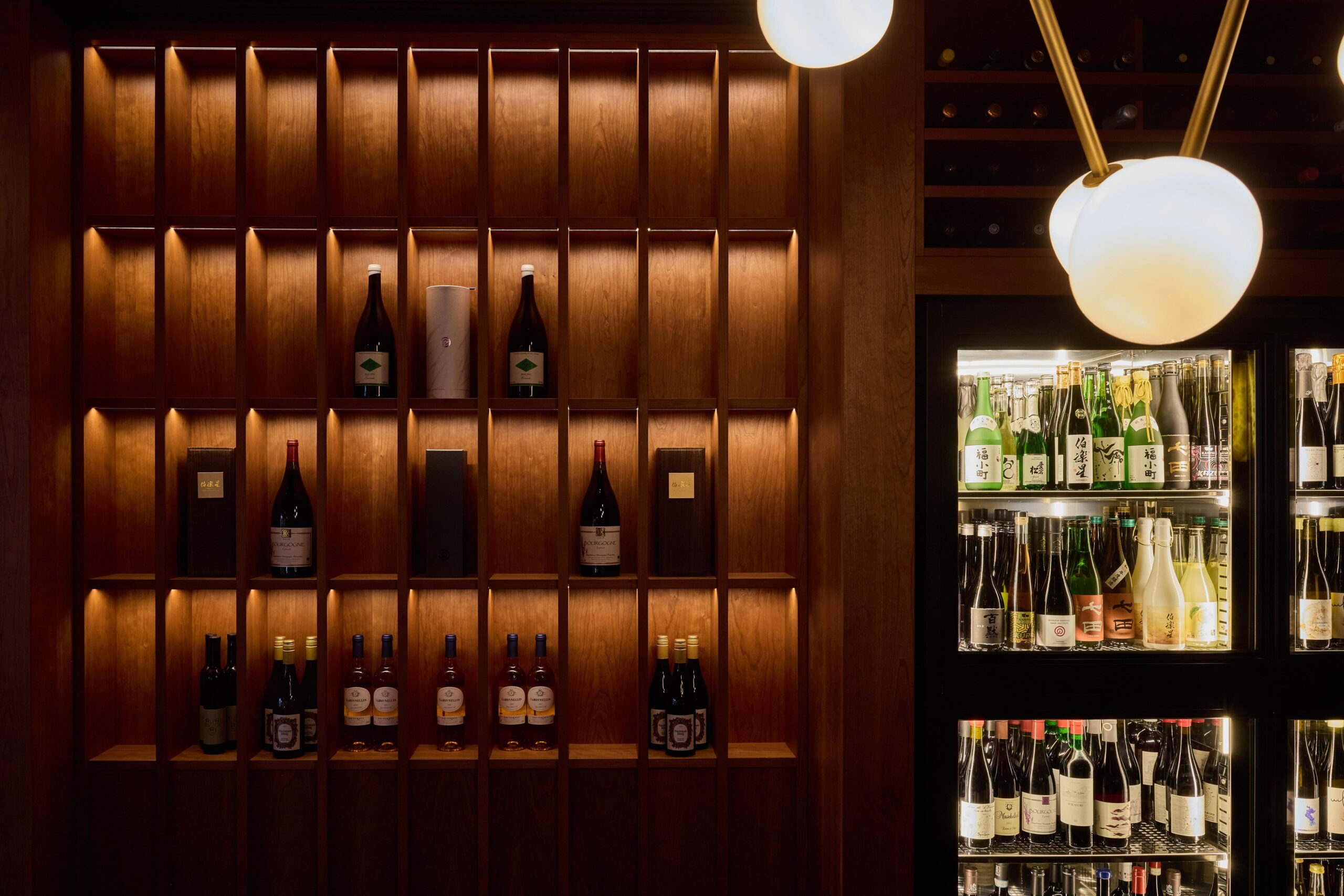
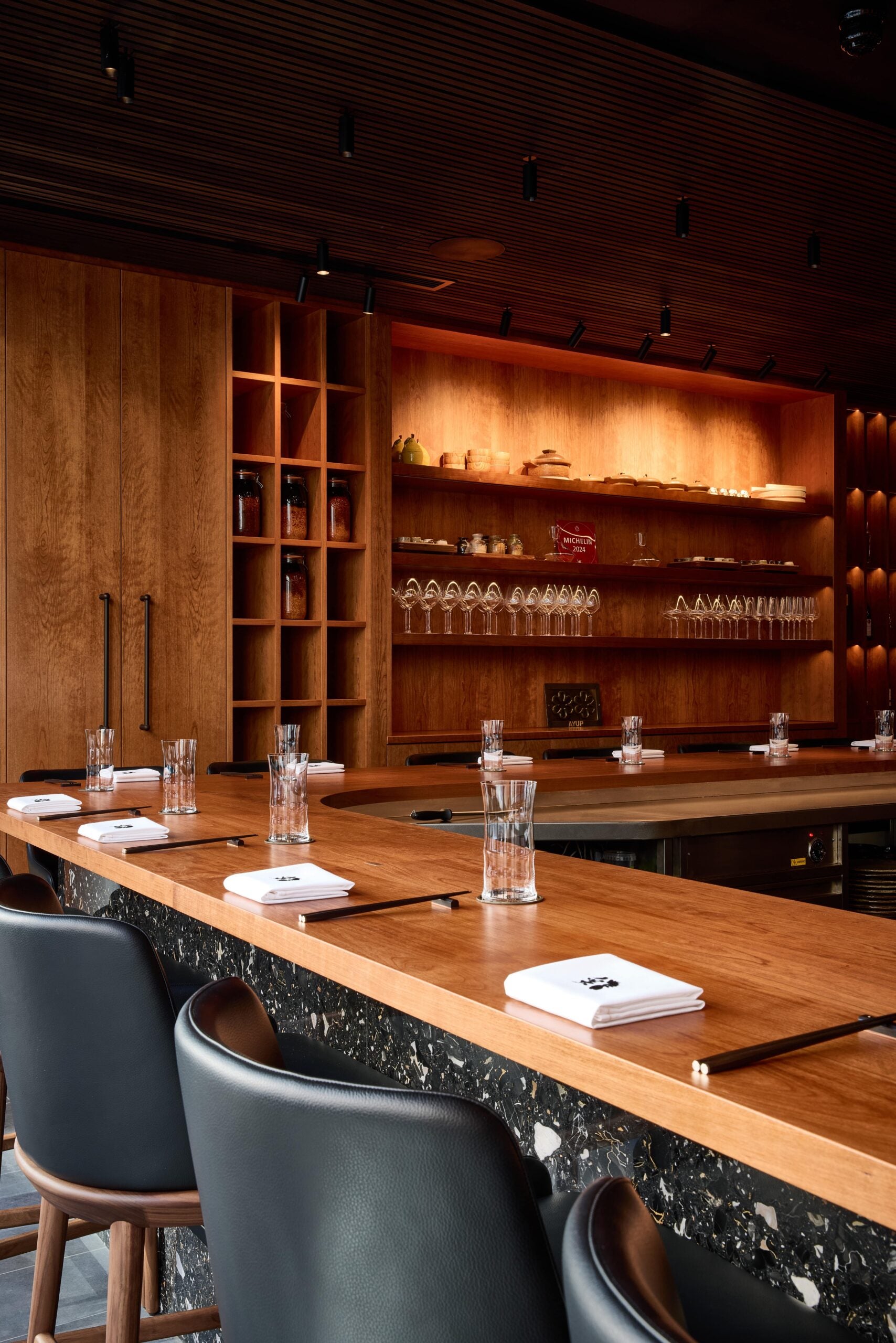
Return visitors will notice a jump in price, too. A year-and-a-half ago, a set menu was £98 (approx. $133). Before the most recent closure, food alone would set you back £185 (approx. $250). Since reopening, the 16-course tasting menu is now £225 (approx. $305). “You’re looking at about £450 [approx. $610] a head when all is said and done,” Sato says.
Bumping the price on the back of Michelin approval is a point of contention in the wider industry. John Williams of The Ritz Restaurant told me earlier this year that he would never dream of such an act after getting his second star, but Sato is bullish.
“We’re not holding a gun to anyone’s head when they make a booking,” he shrugs. “It’s a lot of money but we’re not the only expensive restaurant in London. We went from 18 to 13 seats so net, we’re making less money than before. Raising the price was a necessary evil to stay alive.”
But while dinner for two here will run you close to $1,500, Sato’s favorite places to eat in the city are a mix, such as Trinity down in Clapham, Tomos Parry’s Soho darling Mountain and Kitchen Table in Fitzrovia. But, in the same breath, he’s singing the praises of Kintan – a casual Japanese barbecue joint with wallet-friendly set menus. “They do a great happy hour!” he says.
To Sato, the experience, not the price nor even the food itself, is the marker of a great restaurant. “I’ve been to 10 three-stars in the past few months, and I can’t remember a single dish I ate. But, I remember when someone came over and made a little joke or tried to connect with me. It’s that kind of thing that really moves the needle when you’re operating restaurants of this level.”
And those little moments of connection are really what Humble Chicken does best: on my visit towards the end of last year, I left armed with a list of other restaurant recommendations from manager Aiden Monk, intel on Sato’s mother’s favorite dish and a whole new Spotify playlist, courtesy of the noughties tunes blaring out the speakers. Not many restaurants can leave you with that, and despite its fancy new stars, Humble Chicken 3.0 is dead-set on staying true to that level of care-free intimacy.
The restaurant is back in full swing, now. The doors are open, the tourists are in London and the seats are full. But enjoying the moment doesn’t seem to be an option as Sato’s desire for that third star is palpable. “It was always the goal,” he says. “There isn’t a recipe – all we can do is double down on what we’re doing already. As long as I know I’ve done everything in my power to get it, I can live with the results.”





